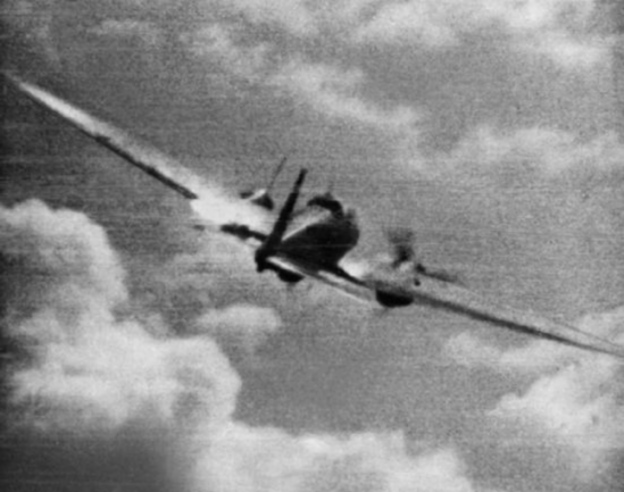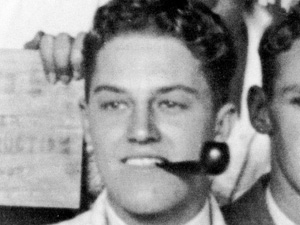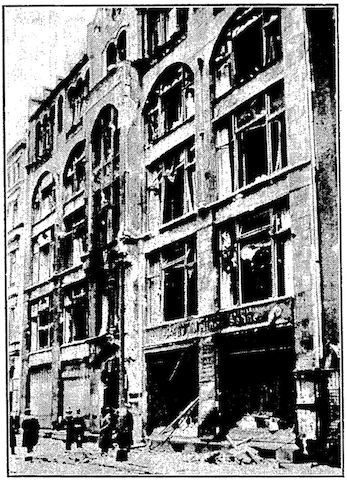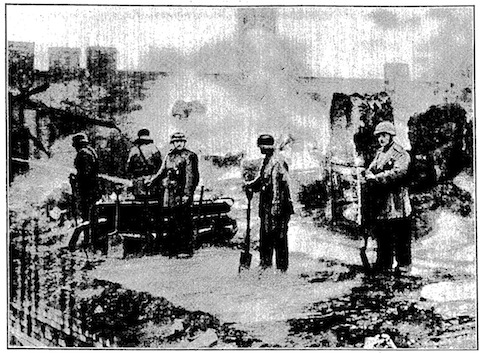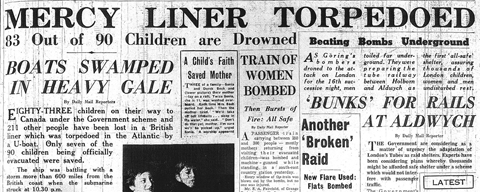Wednesday 30 July 1941
 |
| Finnish soldiers rest before an attack, 30 July 1941. |
In Army Group South, the weeks of grinding at the Russian front in the Ukraine are beginning to tell. The enemy front is crumbling.However, in the very next sentence, a shadow appears on this rosy evaluation:
Nothwithstanding, we must expect that owing to the absence of any pressure from the Romanians and the existence of several well-preserved enemy divisions in the sector of the Front Group South, an attempt will be made to hold the coastal district around Odessa. Odessa may become a Russian Tobruk.Halder's rather gratuitous slap at the Romanians (whose leader, Ion Antonescu, today pledges his military's support throughout the campaign) is symptomatic of growing stress on the front for the Wehrmacht. Before setting out on Operation Barbarossa, allied involvement was considered helpful but not necessary. In fact, Hitler did not secure Romanian participation until virtually the last moment. Now, however, Romanian failures are portrayed as the cause of major problems. The endemic German scapegoating of its allies has just begun.
In the Far North sector, the Axis advance is stalled except on a few fronts where Finnish troops are taking advantage of their forestland expertise to confound the Soviets. Finnish Group J of 14th Division of III Corps has reached a strongly defended So'yanga canal between Lake Pyaozero and Lake Topozero. In a daring assault, the Finns smuggle a battalion of Group J across the western tip of Top Lake. This effectively flanks the Soviet canal position between the lakes and provides the leverage the Finns need to pry them out of their defenses. Meanwhile, Group F also is advancing on two fronts (moving along the north shore of the large Sredneye Kuyto Lake and along the Korpi Yarvi - Ukhta (Kalevala) road) to the Yeldanka Lake area. As this advance develops, it places Group F about 12 miles northwest of Ukhta, putting further pressure on the Soviet defenders in the sector.
The way now appears open to Kestenga and, much further beyond, the strategically critical Murmansk railway line. The Stavka, realizing the danger, begins transferring reinforcements (the independent Grivnik brigade and the 88th Rifle Division) to defend Kestenga. Both sides rely upon the very few roads in the endless wilderness, which greatly aids the defense. This particularly delays the Germans, who are unfamiliar with the wilderness and, like the Soviets, prefer to remain on the roads. However, the Finns have proven in the Winter War that they are comfortable operating off the roads, which greatly reduces the ability of the Soviets to simply blockade a road and thereby stop the Axis advance.
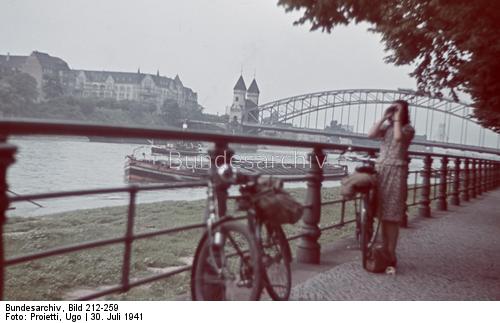 |
| "Magdeburg.- Irene Proietti with bicycle south of the Hindenburg bridge (ex Königsbrücke, northbridge) in front of the Elbe." 30 July 1941 (Proietti, Ugo, Federal Archive, Bild 212-259). |
In the Army Group Center sector, the Soviet 20th Army leads the 16th and 19th armies in an attempt to break out of the pocket near Smolensk. The Soviets do manage to open a hole in the perimeter, aided by other attacks by Soviet forces to the east. A relatively small number of Soviet troops escape. However, the Wehrmacht's Panzer Group 2 and 3 quickly seal the front again and trap 300,000 Soviet soldiers for good.
German 17th and 18th Panzer Divisions of 47 Corps are so depleted from a month of fighting and maneuvering that the OKH considers merging them. The truth is, though, that many other divisions are in similar states. Still, even in their depleted states, panzer divisions can still hold their own against the Soviet formations opposing them.
General Zhukov activates a new front, the Reserve Front. It contains the 24th Army, 28th Army, 29th Army, 30th Army, 31st Army, and 32nd Army. This is a sign of Soviet strength, as it demonstrates that the Soviets have entire armies that they have not yet been committed while the Wehrmacht has very few reserves at hand. Zhukov's task is to batter the advanced German position at Yelnya.
In the Army Group South sector, the Soviet commands are more worried about following a Stavka order to defend the Dnieper River crossings than they are defending Kyiv. The German Sixth Army, after first trying to batter the Kyiv defenders frontally, now is sliding around the Soviet concentration to potentially encircle it. Considering that the Soviets have 1.5 million troops in the area, an encirclement would be disastrous to the Red Army, but Stalin has ordered the position held. In fact, he is so adamant about this that he has demoted his chief military lieutenant, General Georgy Zhukov, to the command of a new front defending Moscow near Yelnya.
After dark, the British send 116 bombers (62 Wellingtons, 42 Hampdens, 7 Halifaxes, and 5 Stirlings) against Cologne. However, it turns out that, although the skies have cleared over England, they are still rough over the Continent. The British pilots do their best but wind up bombing blind through clouds and thunderstorms. Most of the bombloads wind up dropping harmlessly in the countryside, with minimal damage to Cologne itself. Once again the raid causes more damage to the attackers than the target, as the Germans shoot down 2 Hampdens and one Wellington and six more planes crash while trying to make it back to base. An additional raid on Boulogne by 12 Whitleys also turns back due to the weather.
Battle of the Baltic: The Luftwaffe bombs and sinks Soviet submarine S-6 off Saaremaa, Estonia.
Soviet auxiliary minesweeper No. 51 Zmey sinks today of unknown causes.
Furious launches its aircraft of RAF No. 800 Squadron at Petsamo. The Germans, however, having been forewarned and not being completely stupid, have virtually emptied the harbor of ships. The pilots do claim sinking one small ship (the Rotvær) and some harbor infrastructure, but they encounter vicious anti-aircraft fire - go figure - lose two planes (a Fulmar and an Albacore). Another plane fails to make it back.
Victorious takes on Kirkenes, and that becomes a true disaster. The Luftwaffe is ready and waiting for the RAF raid by Nos. 827, 828, and 809 Squadrons. There are operational problems on the British end which cause the different groups of planes to deliver uncoordinated attacks, and the planes approach from the wrong side - over the mountains. Once again, as at Petsamo, the harbor is virtually empty. The planes do sink one 2000-ton ship and damage another, but the defending Bf 109s, Bf 110s and even a Junkers Ju 87 inflict horrendous damage. The British lose 11 Albacores and two Fulmars, and an additional 8 Albacores are damaged. The Luftwaffe does lose a few planes, but overall Operation EF is a flaming disaster of wasted effort and lost planes for the British.
U-371 (Kptlt. Heinrich Driver), on its second patrol out of Brest, is operating southeast of the Azores when it spots two ships that recently have dispersed from Convoy OS-1. It torpedoes and sinks:
The Sitoebondo launches three lifeboats, but one is lost at sea with 17 people on board and never found.
- 6935-ton British freighter Shahristan (65 deaths, 33 survivors)
- 7049-ton Dutch freighter Sitoebondo (17 deaths, 70 survivors).
German 238-ton fishing trawler Pickhuben is hit with an aerial mine and sinks in the southern part of the North Sea.
The RAF bombs and damages German freighter Inga Essberger at the mouth of the Elbe River.
Royal Navy submarine Seawolf (Lt Cdr Raikes) spots U-562 making its way across the Bay of Biscay. It attacks but misses.
US aircraft carrier USS Yorktown leads task force TG-2.5 from Hampton Roads, Virginia on a neutrality patrol that is scheduled to last until 10 August.
Royal Navy minelayer Port Quebec lays minefield SN-21C in the North Sea.
Convoy OG-70 departs from Liverpool bound for Gibraltar.
Royal Navy submarine HMS Trusty (William D. A. King) and destroyer Puckeridge are commissioned, while submarine Unseen is laid down.
Canadian minesweeper HMCS Ingonish is launched at North Vancouver, British Columbia.
Free French corvette FS Renoncule (Lt. Herbert B. Acworth) is commissioned.
U-504 (Korvettenkapitän Fritz Poske) is commissioned, U-508 is launched, U-382 is laid down.
 |
| "Men of the Saxmundham Home Guard prepare to fire a 'Blacker Bombard' during training with War Office instructors, 30 July 1941. The weapon was a 29mm spigot mortar, designed by a Lieutenant Colonel V V S Blacker, and could fire a 20lb bomb some 900yds." © IWM (H 12299). |
Operation Style commences when a large force leaves Gibraltar. This is another supply mission to Malta. British Force X, led by lighter cruisers Arethusa and Hermione, carry troops and supplies to Malta that had been on troopship Leinster, which grounded and was scratched from Operation Substance. While not involving a major convoy, Operation Style does involve numerous diversions and feints over the next few days.
At Tobruk, No. 8 Commando stages a special operation to basically kidnap an enemy soldier from the no-man's land in order to gather military intelligence. It is a typical mission, and successful, but the young officer, David Sutherland, who writes about it adds a few personal thoughts:
My own feelings at being besieged in Tobruk were depression and unease. The experienced enemy had the initiative. One did not know what was going to happen next. Our job was to rest by day and patrol in no-man’s-land during the night.Sutherland's feelings are not unique. The Australian commanders know that morale is suffering because of the trying conditions within the Tobruk perimeter, and already have begun shipping some soldiers out for rest and recreation at Mersa Matruh. While Mersa Matruh is hardly a garden spot, at least there the men don't have to suffer through continual artillery barrages and wonder where their next meal is coming from.
Royal Navy submarine Olympus (Lt Cdr Dymott) is operating off Cape Camino when it makes an unsuccessful attack on an Italian freighter.
Operation Guillotine, the British reinforcement of Cyprus, continues with Australian sloop Parramatta escorting transport HMS Gujarat to Famagusta.
At Malta, Governor Lt. General Dobbie sends a telegram to the War Department warning that food supplies are an issue because wheat mills are concentrated in one small area of the island and need to mill about 100 tons of flour every day to feed the population. He warns that, even with stockpiles of food, without the wheat mills, Malta could only withstand a siege for 100 days.
An Axis convoy departs from Naples to Tripoli. It includes four freighters escorted by an Italian destroyer and four torpedo boats.
Battle of the Pacific: The US Navy decides to inspect 17 Japanese fishing trawlers parked off the main islands of Hawaii. When they find radio transmitters, cameras, and a reserve officer of the Imperial Japanese Navy on each ship, the USN ships detain all of the spy ships.
Australian troop convoy US-1B departs Melbourne bound for Fremantle and then Singapore. Troop Convoy WS 9AX arrives at Colombo en route to Singapore.
Special Operations: Royal Navy submarine HMS Unique (Lt Collett) lands commandos at the western tip of Calabria, Italy. Their mission is to sabotage railways and trains.
agreement (the "Sikorski–Mayski agreement") with the Polish government-in-exile, led by General Sikorski, in London. The agreement provides in part:
The Government of the U.S.S.R. expresses its consent to the formation on territory of the U.S.S.R. of a Polish Army under a commander appointed by the Polish Government in agreement with the Soviet Government, the Polish Army on territory of the U.S.S.R. being subordinated in an operational sense to the Supreme Command of the U.S.S.R., in which the Polish Army will be represented. All details as to command, organization and employment of this force will be settled in a subsequent agreement.This is not an ideal arrangement. Basically, it makes such a Polish army a mercenary force for the Soviet Union. It does meet the Soviet goal as to the formation of a Polish Army (ultimately known as the Anders Army after its commander Władysław Anders) from 25,700 POWs held in the USSR.
Winston Churchill grandly proclaims this treaty as:
proof of the fact that hundreds of millions of men all over the world are coming together on the march against the filthy gangster power which must be effectively and finally destroyed.The treaty is only a first step and creates a great deal of ambiguity. More importantly for the Poles, they have no way to enforce proper conditions for the Anders Army and no recourse if it is misused or maltreated.
German/Romanian Relations: Romanian leader Ion Antonescu pledges that his forces will fight beside the Wehrmacht until the final defeat of the Soviet Union.
 |
| A clearer picture of the signing of the Sikorski-Mayski Agreement, 30 July 1941. |
US/Japanese Relations: President Roosevelt extends the sanctions against Japan to include aviation fuel.
The US government grants an exception to one Japanese freighter, the Tatsuta Maru so that its owners can pay for enough fuel for it to return to Japan.
US/Czech Relations: The United States formally recognizes the Czechoslovak government-in-exile in London.
German Military: The OKW issues Fuhrer Directive No. 34, "Strengthening Soviet Resistance." As compared to previous Fuhrer Directives, which tended to have a broad, strategic scope, Directive No. 34 deals with tactical situations of the moment. More than anything, this directive shows that Hitler gradually is losing his perspective and is being drawn into the day-to-day tactical decisions of the Wehrmacht.
In terms of substance, the directive categorically orders Army Group Center to "go over to the defensive, taking advantage of suitable terrain." This is diametrically opposed to what Field Marshal Fedor Bock and his generals wish to do, and already they are scheming about how to frustrate this order.
 |
| "Troops of the 3rd Canadian Division are carried ashore on a tender, having disembarked from a troopship at Gourock in Scotland, 30 July 1941." © IWM (H 12340). |
US Government: President Roosevelt sends a lengthy message to Congress requesting wage and price controls. He warns that inflation is taking off, up 3.5% since the beginning of 1941 alone.
Roosevelt also issues Executive Order No. 8839. It establishes the Economic Defense Board and is to be chaired by Vice President Henry A. Wallace.
 |
| "Castle near Magdeburg, Magdeburger Straße.- "Sharp corner", in the background Church of St. Nicolai / lower church." 30 July 1941. (Proietti, Ugo, Federal Archive, Bild 212-257). |
The US quickly protests the damage to Tutuila, and the Japanese just as quickly apologize and call it a "tragic accident." While not an enduring international incident, the bombing heightens tensions and reinforces the prevailing American view that the Japanese are "testing" the United States. There seems to be at least a grain of truth to this, as observers on the ground report that the Japanese bombers, far from trying to avoid hitting the US ship, actually go out of their way to target it.
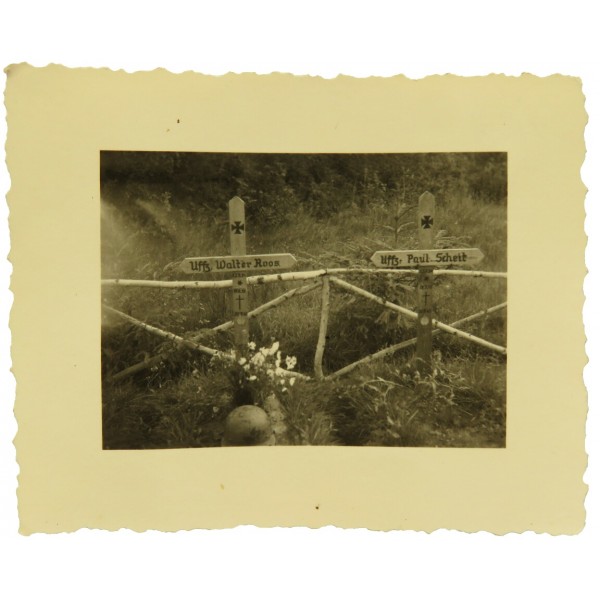 |
| The graves of two Wehrmacht soldiers of the 34th Infantry Regiment KIA 30 July 1941. |
American Homefront: The Chinese Consul-General in Honolulu, King-Chau Mui, delivers a radio address from Hilo, Hawaii. He calls for the "development of the international war front today" in order to preserve the "security of peace, justice, and freedom."
July 1941
July 1, 1941: US TV Broadcasting Starts
July 2, 1941: MAUD Report
July 3, 1941: Stalin Speaks
July 4, 1941: Pogroms in Eastern Europe
July 5, 1941: Germans on Schedule
July 6, 1941: Australians Attack Damour
July 7, 1941: US Marines in Iceland
July 8, 1941: Flying Fortresses In Action
July 9, 1941: British Take Damour
July 10, 1941: Sword and Scabbard Order
July 11, 1941: Cease-fire in Syria and Lebanon
July 12, 1941: Anglo/Russian Assistance Pact
July 13, 1941: Uprising in Montenegro
July 14, 1941: Katyusha Rocket Launchers in Action
July 15, 1941: Smolensk Falls
July 16, 1941: Stalin's Son Captured
July 17, 1941: Heydrich Orders Mass Executions
July 18, 1941: Twin Pimples Raid
July 19, 1941: V for Victory
July 20, 1941: The Man Who Wouldn't Shoot
July 21, 1941: Moscow in Flames
July 22, 1941: Soviet Generals Executed
July 23, 1941: Secret Plan JB 355
July 24, 1941: Operation Sunrise
July 25, 1941: US Naval Alert
July 26, 1941: Italian E-Boat Attack on Malta
July 27, 1941: MacArthur Returns
July 28, 1941: Auschwitz Exterminations
July 29, 1941: Rescue From Crete
July 30, 1941: Raid on Petsamo and Kirkenes
July 31, 1941: Final Solution Order
2020
















